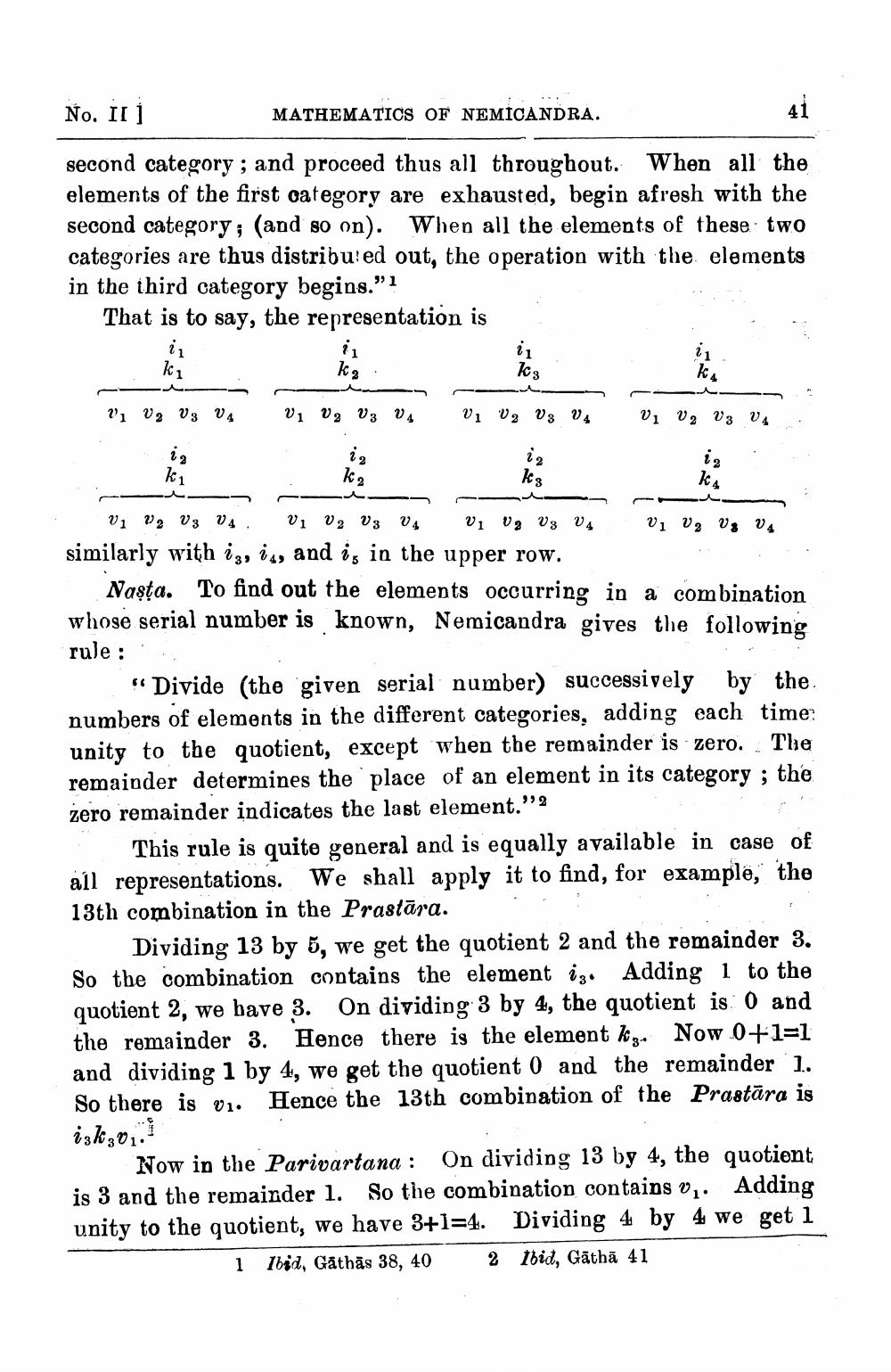________________
No. II 1
second category; and proceed thus all throughout. When all the elements of the first category are exhausted, begin afresh with the second category; (and so on). When all the elements of these two categories are thus distributed out, the operation with the elements in the third category begins."
1
That is to say, the representation is
in k1
V1 V2 V3 V4
i2 k1
MATHEMATICS OF NEMICANDRA.
i
k2
V1 V2 V3 V4
12
k2
u
i1 K3
V1 V2 V3 V4
i k3
V1 V2 V3 V4.
V1 V2 V3 V4
V1 V2 V3 V4
similarly with is, is, and is in the upper row.
i1 Ks
V1 V2 V3 V4
i2 KA
V1 V2 V3 V4
Nasta. To find out the elements occurring in a combination whose serial number is known, Nemicandra gives the following rule:
"Divide (the given serial number) successively by the. numbers of elements in the different categories, adding each time: The unity to the quotient, except when the remainder is zero. remainder determines the place of an element in its category; the zero remainder indicates the last element."2
This rule is quite general and is equally available in case of all representations. We shall apply it to find, for example, the 13th combination in the Prastara.
Dividing 13 by 5, we get the quotient 2 and the remainder 3. So the combination contains the element is. Adding 1 to the quotient 2, we have 3. On dividing 3 by 4, the quotient is 0 and the remainder 3. Hence there is the element k Now 0+1=1 and dividing 1 by 4, we get the quotient 0 and the remainder 1. So there is v1. Hence the 13th combination of the Prastara is
içkзv1.
Now in the Parivartana: On dividing 13 by 4, the quotient is 3 and the remainder 1. So the combination contains v1. Adding unity to the quotient, we have 3+1=4. Dividing 4 by 4 we get 1 1 Ibid, Gathas 38, 40 2 Ibid, Gathā 41




